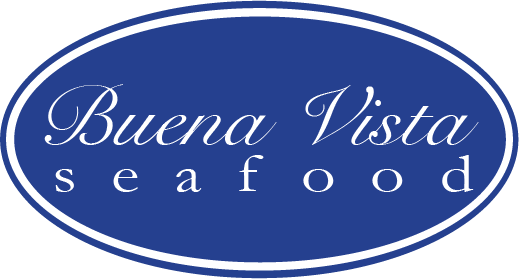You Are What You Eat
You Are What You Eat
“Tell me what you eat and I will tell you what you are.”
-The Physiology of Taste
Jean Brillat-Savarin, 1825
A recent article in the online seafood press caught my attention: Is the Aquaculture Industry Ready for Feces Based Feed?[1] A Norwegian company with expertise in fermentation technology is able to convert fish sludge / feces into protein. Hyperthermics CEO Erlend Haugsbo said, "It depends on how much fish sludge you have available, but we turn over 40 percent into protein. So 4,000 metric tons would require 10,000 tons of sludge. It's scalable.”
No reason to be flushed with anxiety. I’m not crying foul. I don’t pooh-pooh the subject. I recognize value in converting waste into usable forms. But excrement as a feed ingredient isn’t at the top of my totem pole. In fact, it could never rank higher than number two.
Between 1961 and 2016, the average annual increase in global food fish consumption has been twice as high as population growth. What an amazing and positive factoid. Moreover, we turned a corner in 2011 that went largely unnoticed by the general population. For the first time in history, the production of farmed fish exceeded the production of beef for human consumption
Global fish production peaked at about 171 million metric tons in 2016, with aquaculture representing 47% or approximately 80 million metric tons. With wild fish production relatively static since the late 1980s, aquaculture has been responsible for the continuing impressive growth in the supply of fish for human consumption.
One of the greatest challenges facing aquaculture today is the feed supply. We are long past the point where aquaculture relies solely on marine ingredients for fish feeds. Incorporating soy protein concentrate (SPC) and other plant-based ingredients into aquafeeds is widespread. Livestock and poultry processing wastes like bovine blood meal and feather meal are not uncommon feed components. All of these allow aquaculture to expand while simultaneously reducing pressure on wild stocks. From a sustainability standpoint, however, we must be careful, if not vigilant. Consider the recent fires in the Amazon - deliberate deforestation designed to open up land for farming soy and raising cattle. You can’t build sustainable aquaculture on the back of unsustainable agriculture. And, sourcing poultry byproducts from factory farms mired in animal welfare issues, widespread usage of antibiotics and environmental degradation is not a formula for building a sustainable food supply.
There is a lot of ongoing research around alternative ingredients for aquafeeds including insect meal, algae, and polychaetes (worms). But all of these require significant investment of both money and time to reach critical mass of scalability.
Now, at the risk of being labeled a stool pigeon, I must discharge my duties and reveal the offal truth. Animals, including aquatic animals, eat poop. Diving into the bowels of darkness, let’s consider the following:
Rabbits, squirrels, dogs, and chimpanzees are known to eat poop. Some young animals, including baby pandas and koalas eat poop.
In 1982, D. Ross Robertson of the Smithsonian Tropical Research Institute published an article in Marine Ecology Series titled Fish Feces as Fish Food on a Pacific Coral Reef[2]. Dr. Robertson and his associates monitored 88 species of reef fish around Palau in the western Pacific Ocean. They observed at least 45 species eat fish feces in addition to other foods. The conclusion? Coprophagy is widespread among herbivorous and detritivorous and - to a lesser extent - carnivorous species at Palau. Moreover, high-quality feces may be as good or better than algae as an energy source!
But, it’s one thing for animals to do in nature what they naturally do. It’s altogether different when humans in the pursuit of lowering the cost of food production feed feces to the animals they raise. It’s well documented that tilapia farmed in China are often fed waste from poultry and livestock, particularly pig feces.
Poultry litter is any and everything found on the floor of poultry factory farm barns, including urea, feces, dead insects, sawdust, wood shavings, animal parts (e.g. broken beaks, feathers), uneaten feed and possibly dead rodents. Feeding poultry litter to cattle is banned in Canada and the EU. Poultry litter is an approved feed for cattle in the U.S. That’s right. Unless you’re eating organic or grass-fed beef, that thick juicy beefsteak you’re enjoying may well have come from cattle raised on a diet that includes chicken manure.
In 2013, FDA estimated that cattle in the U.S. are fed upwards of two million tons of poultry litter annually. A single cow may eat as much as three tons of poultry waste annually[3]. But, two million tons of poultry litter is barely a drop in the toilet bowl. Alabama alone produces one million tons of chicken waste every year.
The FDA states it is “not aware of any data showing that the use of poultry litter in cattle feed is posing human or animal health risks.”
The National Cattleman’s Beef Association cautioned its members from speaking openly about poultry litter stating it would “bring out more adverse publicity.” I can only speak for myself. I don’t care where it’s raised, on land or in the water. The idea of eating animals raised on a diet of excrement leaves a bad taste in my mouth.
“The public sees it as ‘manure’. We can call it what we want and argue its safety, feed value, environmental attributes, etc., but outsiders see it as simply ‘chicken manure.’ And the most valid and convincing scientific argument isn’t going to counteract a gag reflex.” - Beef magazine editorial
There are 7 billion people on this planet. We’re adding roughly another 80 million every year. We can’t escape the limits of nature. We need to restructure the industrial food system to respect those limits. There are two options, live within Earth’s natural boundaries or stock up on mouthwash. Remember, you are what you eat.
Bon appetit!
- Dale Sims, Fishmonger
[1] https://www.intrafish.com/aquaculture/1845337/is-the-aquaculture-industry-ready-for-feces-based-feed
[2]https://pdfs.semanticscholar.org/9896/9832351ce5ebba7ada142ac86362741036ab.pdf
[3] https://www.huffpost.com/entry/mad-cow-disease-california_b_1450994

